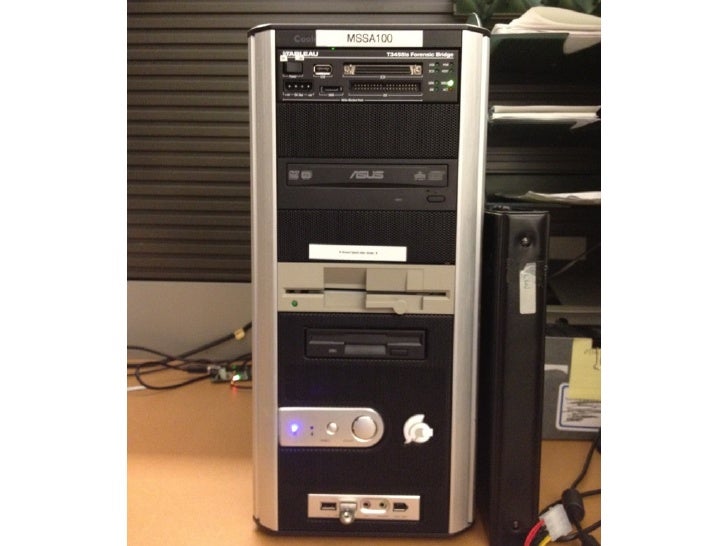Digital Forensics Tool Testing Archive
Digital Forensics Tool Testing ArchiveDownload Free Software Programs Online. Digital Forensics for Digital Archives 1. Digital Forensics Tool Testing. BitCurator: Tools and Techniques for Digital Forensics in Collecting Institutions. Christopher A. Lee, University of North Carolina, Chapel Hill. Digital Forensics Tool Testing Images. Testing in the public view is an important part of increasing confidence in software and hardware tools. Developing extensive.
Abstract This paper introduces the BitCurator Project, which aims to incorporate digital forensics tools and methods into collecting institutions' workflows. BitCurator is a collaborative effort led by the School of Information and Library Science (SILS) at the University of North Carolina at Chapel Hill and Maryland Institute for Technology in the Humanities (MITH) at the University of Maryland. The project arose from a perceived need in the library/archives community to develop digital forensics tools with interfaces, documentation, and functionality that can support the workflows of collecting institutions. This paper describes current efforts, ongoing work, and implications for future development of forensic-based, analytic software for born-digital materials. Introduction The acquisition of digital materials by collecting institutions libraries, archives and museums (LAMs) has resulted in the need to incorporate new tools and methods into curatorial practices.


LAMs are increasingly called upon to move born-digital materials from removable media into more sustainable preservation environments. This can involve media that are already in their holdings (e.g., disks stored in boxes alongside paper materials), as well as materials being acquired for the first time from individual donors or other producers. Digital collections can be encountered at multiple levels of representation, which brings unprecedented opportunities for description, interpretation and use.
There is a substantial body of information within the data structures of computer systems that can often be discovered or recovered. Along with new opportunities, institutions also face a variety of technical difficulties as they process digital data, including: filesystem discrepancies between storage environments, media format obsolescence, operating system incompatibilities, and hardware risks (, 2010, pp. Integrating digital forensics approaches with curation workflows can help LAM professionals to ensure the authenticity, integrity, and provenance of digital materials. Digital forensics focuses on the discovery, recovery, and validation of information from computer systems information that is often not immediately visible to common users. More than a decade ago, a report by (1999) discussed the potential relevance of advances in data recovery and digital forensics to collecting institutions.
More recently, there has been an active stream of literature related to the use of forensic tools and methods for acquiring and managing digital collections (, 2009;, 2010;, 2008;, 2009;, 2008;, 2007;, 2009;, 2009;, 2011;, 2011). A project called 'Computer Forensics and Born-Digital Content in Cultural Heritage Collections' hosted a and generated a report in 2010. Both the symposium and the report provided significant contributions to this discussion.
The Born Digital Collections: An Inter-Institutional Model for Stewardship (AIMS) project developed a framework for the stewardship of born-digital materials that includes the incorporation of digital forensics methods (, 2012). The Library of Congress named the growing visibility of digital forensics as one of the. The, a collaborative effort led by the and, builds on previous work by addressing two fundamental needs and opportunities for collecting institutions: (1) integrating digital forensics tools and methods into the workflows and collection management environments of LAMs and (2) supporting properly mediated public access to forensically acquired data. The project team has developed a set of requirements documents, which we are iteratively revising based on input from our expert advisors. We are currently developing prototype software that will be subject to various forms of testing and review. Professional Experts Panel The PEP is composed of professionals working at collecting institutions; these include local municipalities, national government archives, academic institutions, and libraries.
Each panel member has practical experience working in digital curation, and their respective institutions are all exploring or implementing digital forensics tools and methods. In December of 2011, PEP members gathered with the BitCurator team for a two-day meeting at MITH to discuss initial drafts of BitCurator design documents, identify needs not currently met by existing open source digital forensics tools, and discuss how BitCurator might complement, support and enhance existing digital curation workflows. Development Advisory Group The DAG is composed of academic, government and industry professionals who have significant experience with development or management of development groups. The majority of these members work in, or closely with, collecting institutions. DAG members are assisting in BitCurator's design process and scoping, along with mapping in-scope items to specific needs. Ableton Live Riser Device - Max For Live. Ongoing communication with the DAG also will ensure that BitCurator efforts complement software being developed by others. The first BitCurator DAG meeting coincided with an event on January 6, 2012 in Chapel Hill called, where DAG members gave presentations on projects and activities within their own institutions.